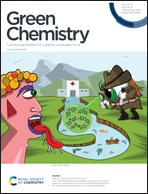Systematic metabolic engineering of Bacillus licheniformis for hyperproduction of the antioxidant hydroxytyrosol†
Abstract
Hydroxytyrosol (HT) is a natural antioxidant that exhibits various health-related properties. In this work, we focused on establishing and optimizing the production of HT in Bacillus licheniformis. Through protein engineering ketoacid decarboxylase, boosting the phosphoenolpyruvate (PEP) supply, releasing feedback inhibition, and blocking competing pathways, HT production increased to 2078 mg L−1 from zero. Remarkably, the tyrosol catabolic pathway was identified and deletion of the alcohol dehydrogenase gene adhA significantly reduced tyrosol degradation. Next, multiple rate-liming factors were identified, including insufficiency of PEP, erythrose-4-phosphate and 4-hydroxyphenylpyruvate supply, and imbalance of KivDV461I and HpaBC expression levels. The carbon flux toward HT was significantly improved by modulating the glucose transport system, fine-tuning the expression levels of kivDV461I and hpaBC, and enhancing the expression of tyrAfbr, tkt, and zwf, which increased the HT titer to 6299 mg L−1. Finally, the final strain DHT23 produced 9475 mg L−1 HT under fed-batch conditions, with a yield and productivity of 135.4 mg g−1 glucose and 395 mg (L h)−1, respectively, which represents the highest HT production to date. Taken together, this study establishes B. licheniformis as a framework for HT hyperproduction and paves the way for achieving the industrial production of HT in the future.



 Please wait while we load your content...
Please wait while we load your content...